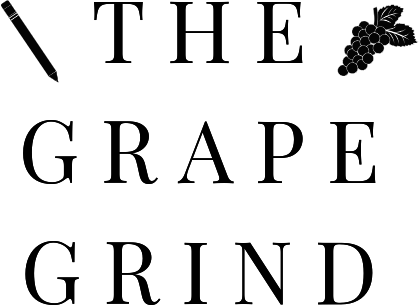
Wine Blends: The Treasures of the Wine World
This cannot be further from the truth.
In fact, the most famous premium wines like Champagne, Bordeaux, Chianti Classico, and Sauternes, to name a few, are all blends. These blends became so successful and enjoyable that they were replicated and celebrated all around the wine making world.
So why do winemakers blend?
The short answer: to make the best possible wine with complexity and balance. Blending can elevate the quality of the wine, enhance its color, texture, flavor and aromatics, and balance its structure. Blending makes the finished wines “greater than the sum of its parts.”

Field blends are rare today but there are still some being produced in places like Portugal and Austria.
Blending, however, continues as an essential part of winemaking but it is typically carried out after the fermentation or maturation of the individual wines. Blending might even be mandatory in some regions where it is required by law that producers use specific grapes, in a defined upper or lower percentage, in their wines.
Nowadays, winemakers are also more aware of the potential of each grape and its individual contribution to a blend. Blends can be made from wines of multiple grape varieties, or from several vineyards or regions, also known as “geographical blending”, or from wines produced using different winemaking techniques.
Each grape in a blend will serve a purpose: affecting color, body, texture, aroma/flavor, acidity, tannins, or alcohol. In other words, each grape contributes its assets to fine tune the final wine. The main aim of this blend is to produce a balanced well-structured wine. In a Bordeaux blend, for example, Cabernet Sauvignon can contribute color, tannins, and acidity to a blend while Merlot gives softness and a smoother texture also adding red fruit flavors/aromas to Cabernet Sauvignon’s black fruits.

Wines from different vintages can also be blended. The best example of that is the famous and popular Non-Vintage Champagne, which in itself is usually a multi-varietal blend of Chardonnay, Pinot Noir, and Meunier.

Producers in New Zealand are recently experimenting extensively with different types of blends to add complexity to their classic single varietal Sauvignon Blanc. Other remarkable efforts are being made by single varietal Malbec producers in Argentina and Shiraz producers in Australia.
It’s important to note here that in single varietal wines, the wine rarely contains a full 100% of that grape, with the exception of Alsace (which demands it by law for any wine that proudly highlights the varietal on the label). In Europe, a single varietal wine can be a minimum of 85% of that grape, while in the United States it can be at least 75% with the rest of the wine made from other grapes that are not required to be disclosed on the label.

Apart from the wines of the luxurious and exceptional Chateau Petrus in Pomerol, that are made exclusively from Merlot, Bordeaux wines are almost always blended. Even the most premium wines from the top producers like Chateau Margaux, Chateau Latour, Chateau Mouton Rothschild, for example, are usually blends. It’s true that their wines consist predominantly of Cabernet Sauvignon, but the grape usually constitutes between 75%-90% with the rest of the wine made up from the permitted grapes Merlot, and/or Petit Verdot, and Cabernet Franc in varying percentages. In Bordeaux, producers are also allowed to use Malbec and Carménère as blending partners, but they are used sparingly.
Traditionally, blending in Bordeaux came out of necessity due to the region’s inconsistent maritime climate that is rainy and humid with high risk of fungal diseases spreading in the vineyards. Blending was an “insurance policy against mother nature”, as winemakers put it, where one variety may be jeopardized, getting infected by a fungal disease or struggling to ripen in a certain vintage. In this case, other varieties can compensate in the blend to make a more consistent and balanced wine style. In Bordeaux, the most dependable variety is usually Merlot.
Not all blends are premium, their quality varies just like any single varietal wine. That said, there is an ongoing hot debate in the wine world that blends, premium or not, may not reflect their terroir like single varietal wines do. The jury is still out on that one, however no matter the verdict, blending remains responsible for the beautiful mosaic of wines around the world, creating the most iconic of them.
.



Website: https://thewineofthings.com
